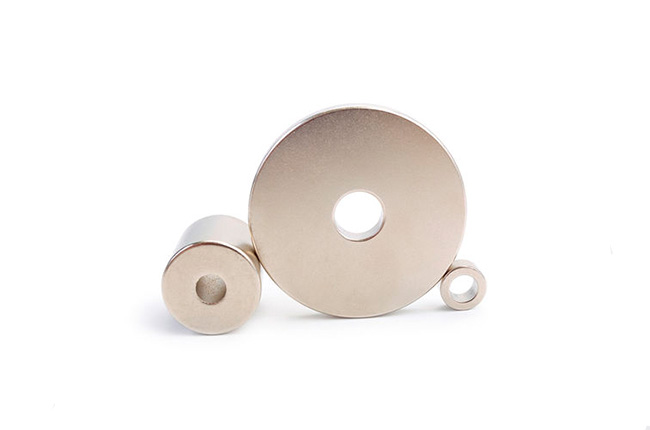

Permanent magnets are essential components in many industrial, electronic, and mechanical applications. They retain their magnetic properties over time without requiring an external power source. Several materials are commonly used to manufacture permanent magnets, each with distinct characteristics.

Common Permanent Magnet Materials
1. Ferrite (Ceramic) Magnets
Composition: Made from iron oxide (Fe₂O₃) combined with barium (Ba) or strontium (Sr) carbonate.
Properties:
Moderate magnetic strength
High resistance to demagnetization
Good temperature stability
Low cost
Applications: Speakers, refrigerator seals, small motors, and magnetic separators.
2. Neodymium Iron Boron (NdFeB) Magnets
Composition: Alloy of neodymium (Nd), iron (Fe), and boron (B).
Properties:
Extremely high magnetic strength
Compact and lightweight
Prone to corrosion (often coated with nickel, zinc, or epoxy)
Lower heat resistance compared to some alternatives
Applications: Electric motors, hard disk drives, headphones, and medical devices.
3. Samarium Cobalt (SmCo) Magnets
Composition: Alloy of samarium (Sm) and cobalt (Co).
Properties:
High magnetic strength, though generally less than NdFeB
Excellent temperature stability
Good corrosion resistance
Higher cost due to cobalt content
Applications: Aerospace, military systems, high-temperature sensors, and precision instruments.
4. Alnico Magnets
Composition: Aluminum (Al), nickel (Ni), cobalt (Co), and iron (Fe).
Properties:
Moderate magnetic strength
High temperature resistance
Good corrosion resistance
Brittle and difficult to machine
Applications: Sensors, electric guitar pickups, and older loudspeakers.
Selection Considerations
The choice of permanent magnet material depends on several factors:
Required magnetic strength – NdFeB offers the highest performance, while ferrite is sufficient for cost-sensitive applications.
Operating temperature – SmCo and Alnico perform better in high-temperature environments.
Environmental conditions – Corrosion resistance may necessitate coatings or alternative materials.
Budget constraints – Ferrite magnets are economical, while rare-earth magnets (NdFeB, SmCo) are more expensive.

Conclusion
Different permanent magnet materials serve various industrial and technological needs. Ferrite magnets are widely used for their affordability, while NdFeB magnets provide superior strength in compact designs. SmCo and Alnico magnets offer stability in demanding conditions. Understanding the properties of each material helps in selecting the appropriate magnet for specific applications.
Contact

We will contact you within 24 hours. ( WhatsApp/facebook:+86 15957855637)



